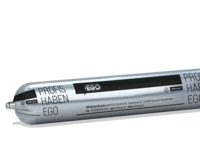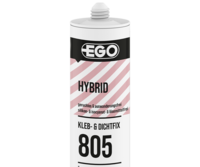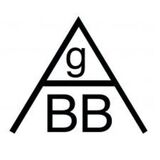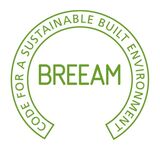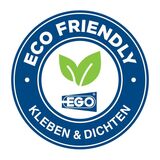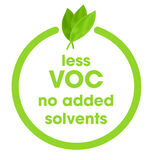Grouting and sealing the floor – An idea further thought!
Whether tile, natural stone, parquet, PVC, concrete, plastic flooring or other floor coverings, we want to offer you the right products for sealing and waterproofing in the floor connection area in the long term. Contact us and we will be happy to help you choose the right products in the floor area.
With our products you can seal and grout any floor area easily and quickly. The biggest challenge for us is to meet the different materials and requirements. Therefore, we always work with our floor and parquet joint compounds with our highest quality standards and continue to develop our products.
Elastic sealants should be used for floor and near-floor joints in interior and exterior areas with stationary loads or moving traffic (e.g. warehouses, production halls, parking decks or underground garages). Traffic and temperature-dependent component movements place high demands on the sealant's mechanical load-bearing capacity, abrasion resistance, and often also its chemical resistance. We offer a wide range of waterproofing solutions for industrial and commercial areas, parking decks, sewage treatment plants, and the food industry.
The joint between floor and wall is called an expansion joint. Expansion joints absorb movement of structural members and prevent stress cracks in the overall structure. The building components are usually made of concrete, screed or slab coverings of ceramic or natural stone.
How to joint correctly – our expert tips
To close floor joints, follow these steps:
- Preparation: new construction or renovation
- Surfaces must be dry, free of dust and grease and free of non-adhering parts (rust, paint, ...) so that the sealant can adhere to them
- In the case of surface coatings, apply these before sealing the joints
- If necessary, pre-treat joint edges with Primer for better adhesion of the sealant
- Restoration: remove old sealing material
- Remove old sealing material and old round cord (backfill material) thoroughly and completely, e.g. with a cutter knife or joint cutter and then clean with a vacuum Cleaner or blow out with compressed air
- Cleaning agents used should not leave any residue on the sealing surfaces, must be compatible with the substrates, and solvents in cleaners must flash off completely, otherwise they may affect the newly installed sealant (influencing the curing and functionality of the new sealant)
- Placement of the sealing compounds
- Select and insert round cord (e.g. PE) according to the joint dimensions (approx. 20 % larger than the joint width) to avoid three-flank adhesion
- Do not damage backfill material during insertion
- Joint depth should correspond to joint width
- The dimensions of the joints are determined by the joint spacing, the mechanical stress and the thermal linear expansion of the building materials and should generally be at least 10 mm and max. 20 mm for expansion joints
- Floor joints that have been walked on should be slightly chamfered or provided with an edge protection profile to protect the concrete/screed edges, and sealant should be applied in a recessed manner
- For floor joints that have been walked on: choose flat flush jointing to avoid tripping hazards and unwanted absorption of liquids
- Protect sensitive surfaces by masking if necessary
- Apply sealant evenly and bubble-free into the joint
- Apply smoothing agent
- Wet the smoothing tool with a suitable smoothing agent and then pull off the joint
- Use only suitable smoothing agent according to manufacturer's recommendations
- Smoothing agent residues on the joint sealant surface or on adjacent materials must be avoided
- When applying with a brush, wet the joint sealant only selectively and with a small amount of smoothing agent, then remove and smooth with a smoothing tool
- Remove excess smoothing agent immediately
- Remove adhesive tape if necessary
- Allow sealant to cure according to manufacturer's instructions / protect joint
- Maintenance
- Regular control
- Different physical, mechanical and chemical loads can lead to defects that result in consequential damage
- Maintenance joints: Maintenance intervals individually depending on the area of application and the expected load
- Defects that can occur: chipping in the flank area, cracks in the sealant, damage to the sealant, mold, discoloration, abrasion/wear
Physical loads on floor joints
- Expansion of the sealant: cracks or tears on the bonding surfaces, tearing of the expansion joint
- Compression of the sealant: Compression of the sealant can cause the sealant to "burst". In addition, fractures may occur at the edges of the components.
- Shearing of the sealant: The bonding surfaces are displaced parallel to each other; this can also lead to tearing or cracking in the bonding surfaces, as well as cracking of the expansion joint.
- Peeling of the sealant: In this case, the components tilt apart in a trapezoidal shape
- Mechanical loads due to walking, driving and cleaning
Chemical loads in floor joints
- Type of chemical
- Concentration of the chemical
- Temperature
- Exposure time
Floor joints for PVC floors
Even though PVC is not a natural material like wood, this flooring will expand after installation or gluing. The expansion joint provides enough distance from the walls to avoid unsightly ripples. Also, to prevent moisture from getting under the floor, the expansion joint must be carefully sealed with silicone.
FAQs about grouting and sealing floors
The area "floor joints" includes expansion joints and connection joints between floor and wall in floor surfaces that absorb movements of building components to prevent stress cracks.
There are three different types of stresses to which floor joints can be exposed:
- chemical due to e.g. waste water, oils, etc.
- mechanical by e.g. pressure loads, forklift traffic, etc.
- thermal by e.g. weathering, etc.
- High tear resistance
- Chemical and mechanical resistance
- Very good adhesion to common building materials in combination with appropriate pretreatments
- Declaration of harmlessness in contact with foodstuffs in food processing plants
- Cleanroom suitability
- SMP HYBRID: EGO SMP 805 KLEB- & DICHTFIX is solvent-, silicone- and isocyanate-free, cross-links neutrally and is paint-compatible as well as water- and weather-resistant. For bonding and sealing elastic connection joints in the construction and industrial sectors for interior and exterior use.
- POLYURETHAN: EGOFLEX 423 is mechanically and chemically resistant, resistant to mechanical cleaning, notch-resistant and cures without bubbles. For floor and connection joints indoors and outdoors, such as warehouses, underground garages, production halls, yard areas, parking decks, entrance halls, staircases, in concrete and screed. Joints for waste water and sewage treatment plants as well as in tunnel construction and clean rooms.
- SILIKON: EGOSILICON 365 is color fungicidal. Connection and movement joints, concrete, plaster, masonry, metals, stress-free plastics and glazed wood.
EGOFÜLL PE is suitable for this purpose. Due to its shape and dimensioning, the joint depth can be limited and adhesion of the sealant to the joint bottom (three-flank adhesion) can be prevented. The round cord has very good resistance to oils, greases, salt water and cleaning agents. It also does not absorb water.
Unlike interior floor joints, exterior floor joints are subject to high stresses.
- UV and weathering influences such as rain, solar radiation
- Change of seasons, artificially generated thermal influences
- Stationary vehicles or machines
- Vibrations from machines
- Abrasion caused by cleaning with brooms, scratching brushes
- Molds, bacteria, etc.
- Road salt, fuels, oils, etc.
Min. 10 mm and max. 20 mm
To avoid tripping hazards and fluid accumulation.
There are three different types of stress to which floor joints can be exposed:
- chemical (waste water, oils, ...)
- mechanical (pressure loads, forklift traffic, ...)
- thermal (weathering, ...)

We are happy to help.
- Application Assistant
- Surface Assistant
- Attributes Assistant
- Sealant Calculator
- Primer Calculator

